In Japan, 1986 was a momentous year for role-playing games.
Picture: Yutaka Izabuchi, via Eiyuu Kishi Den
Dragon Quest and The Legend of Zelda were released to popular acclaim, each garnering millions of sales, and Final Fantasy was mere months away from being unleashed on an unsuspecting world. Japanese game designers had taken inspiration from western RPGs like Wizardry and Ultima and were busy laying the foundations of the JRPG, a genre that would dominate the video game industry throughout the 1990s and beyond.
Dragon Quest and The Legend of Zelda would go on to become household names across the world. But another role-playing phenomenon emerged in 1986 that, although perhaps less well known outside Japan, was arguably just as influential as Dragon Quest and its brethren. And it all began with a Dungeons and Dragons session.
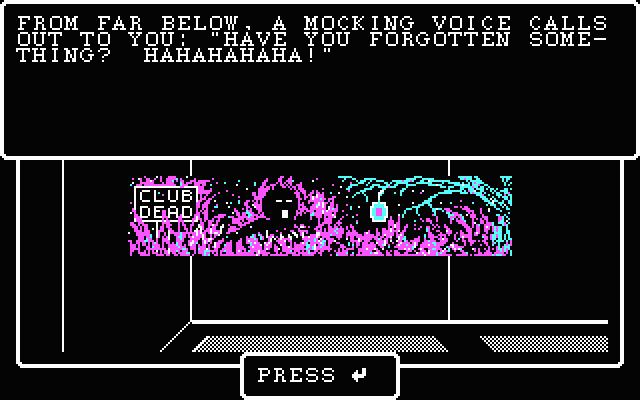
The Wizardry games had a strong influence on Dragon Quest. (Picture: Dale Lee)
DnD had officially arrived in Japan just a year earlier, in 1985. Before then, the table-top role playing game had been the sole preserve of the most dedicated otaku, who would import rulebooks from America and then go about translating them (and all this in the days before Amazon and Google Translate). The arrival of an official Japanese translation in 1985 finally opened up DnD to the masses, although even this version had some local quirks (memorably, ‘leather armour’ ended up being translated as ‘reggae armour’, and ‘platinum pieces’ became ‘plutonium pieces’).
Among the early adopters were a small cadre of friends who would later be known collectively as Group SNE (which stands for ‘Syntax Error’). Under the leadership of Dungeon Master Ryo Mizuno, they created a compelling world of high fantasy populated by elves and magic. The characters were all based on classes from basic DnD: Parn was a fighter, Deedlit was a female elf (who was actually played by a man, Hiroshi Yamamoto), Ghim was a dwarf, Woodchuck was a thief, Etoh was a cleric and Slayn was a magic-user. All of them headed off to fight evil emperors and necromancers, just like in any basic DnD session. The difference was that thousands of people were following their every move.
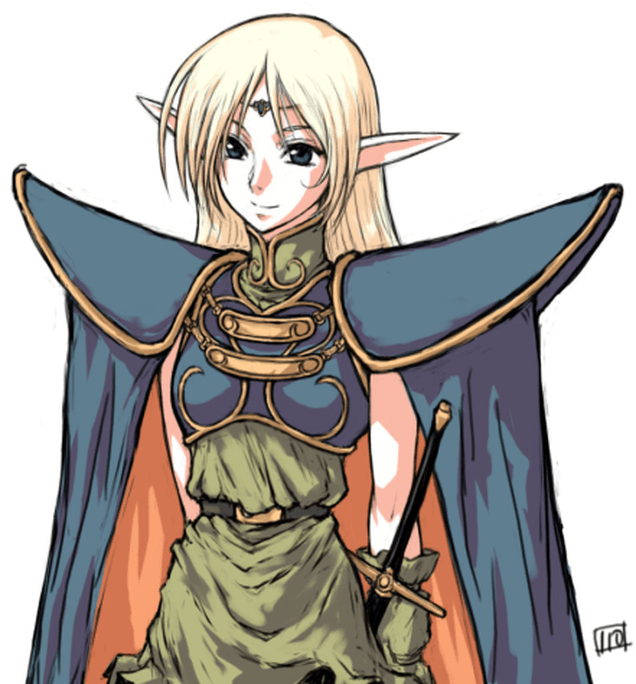
Deedlit the elf. (Picture: Infinite Dream Saga)
The adventures of Group SNE were serialised in a Japanese computer magazine called Comptiq as ‘Record of Lodoss War’ (which has become the accepted translation, although perhaps a better one would be ‘The Lodoss War Chronicles’). These transliterated DnD sessions — or ‘replays,’ as they were known — became immensely popular, so much so that Mizuno turned them into a series of novels that flew off the shelves. Group SNE even moved on from DnD and created their own successful ruleset, ‘Sword World RPG.’ To date, the various Record of Lodoss War novels and Sword World books have sold upwards of an astonishing 10 million copies.
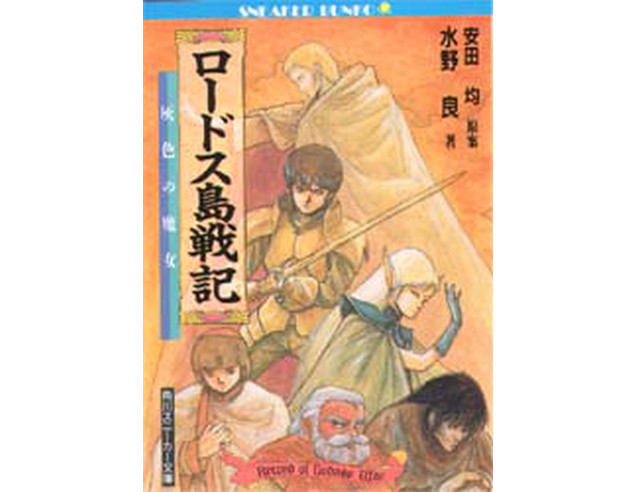
The Grey Witch, the first Lodoss War novel. (Picture: Eiyuu Kishi Den)
But the influence of Lodoss War doesn’t end there. The novels were turned into a seminal 13-episode anime that stood as the benchmark for screen depictions of high fantasy. As Mike Crandol writes at the Anime News Network: “it was not until Peter Jackson’s Lord of the Rings adaptation that Lodoss War was dethroned as the king of cinematic fantasy, live-action or otherwise. In the animated realm, however, it still holds absolute sway.”
Yet despite its success and its roots in western role-playing, Lodoss War has remained relatively unknown outside Japan. It has spawned three anime series, dozens of manga volumes and, at the last count, nine video games — but only one of these games has made it to the west. The fact that this sole English version of a Lodoss War game was released exclusively for the sadly doomed Dreamcast did nothing to alleviate the series’ obscurity. (Incidentally, the game is a fairly decent RPG in the Diablo style that’s well worth seeking out if you’re a fan of the genre.)
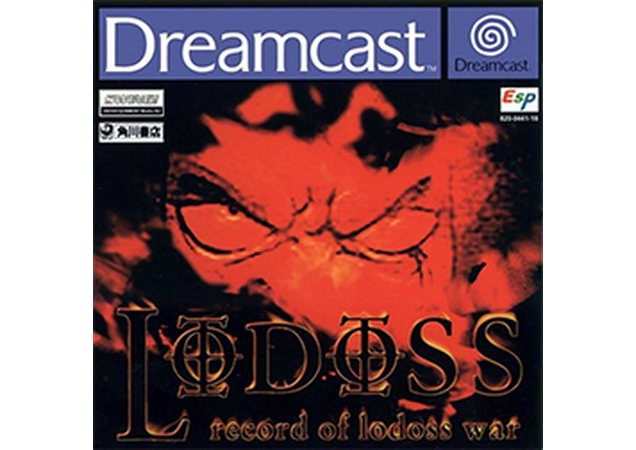
Record of Lodoss War on the Dreamcast. (Picture: Wikipedia)
In the UK, the original anime series was released on VHS in the 1990s, but it was never shown on TV or granted a DVD re-release. It fared slightly better in the US and Canada, where the DVD collection was released in the early 2000s, and a few dedicated fans have even set up their own role playing groups based on the Lodoss universe.
“The look of the elves in Lodoss really fascinated me,” says Jessica Vincent, who set up the Lodoss War role playing group Eiyuu Kishi Den in the early 2000s. “Deedlit and Pirotess [a female dark elf] were the main draw; they were beautiful, nimble, magical, female fighters. My first Lodoss fan character, Zira, was basically a huge rip-off of Pirotess.”
It’s easy to see the appeal of the Lodoss elves, with their extremely long ears, wide eyes and narrow faces, they feel far removed from the Tolkien-style elves we’re used to. And Deedlit in particular has become a firm fan-favourite, who continues to inspire various fan art, cosplay costumes and fan fiction.
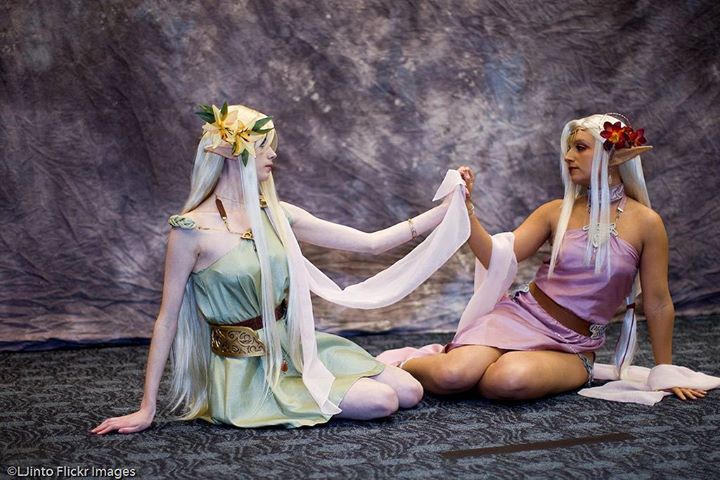
Cosplay of Deedlit (Daydreamernessa’s Cosplay) and Pirotess (WindoftheStars Cosplay). Picture: LJinto/Facebook)
But finding out more about the world of Lodoss proved tricky for Jessica and her friends, not least because the replays and novels have never been translated into English, despite their huge popularity in Japan. “Everyone had their own interpretation of the world beyond what we had seen in the anime, so when I participated in these role-plays, each leader had to fill in pieces of the world as they went because we lacked a lot. It was always a struggle for me to try to stay true to the world without the whole of the source material. One of the members of our group was half-Japanese and had read the novels in Japanese, but I had no real comprehension of the size of the Japanese fandom.”
Despite this handicap, the members of Eiyuu Kishi Den created an impressively coherent world. “We ended up with a massive battle with well over 100 characters involved,” remembers Jessica. “I’m actually a little proud of myself for the organisation of that.” But this dedication came at a cost: she recalls that at one point the role play was “practically a full-time job.”
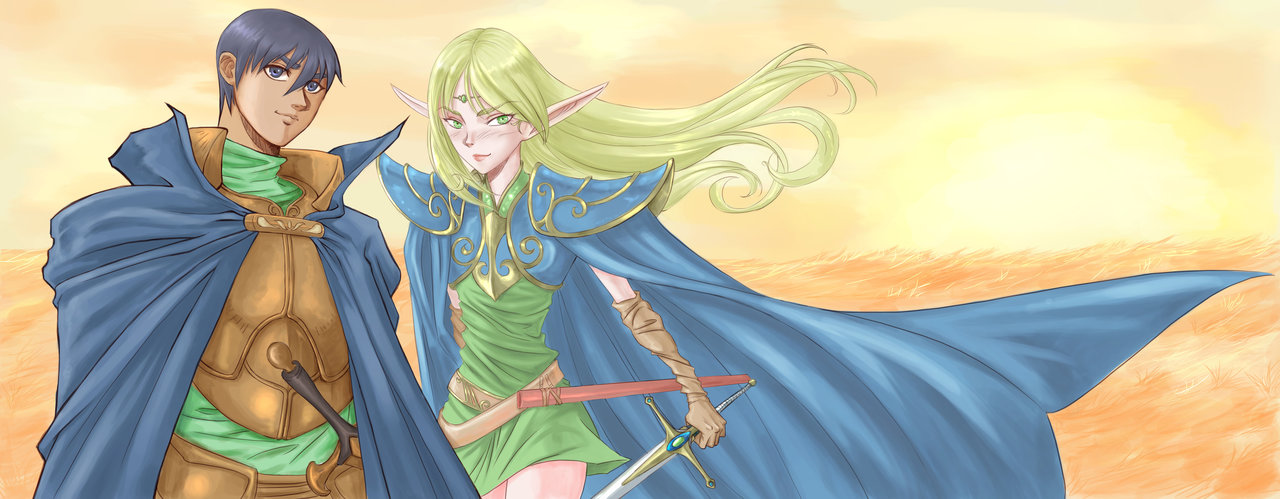
Fan art from Jessica Vincent’s deviantART group. Picture: Irmdesign/DeviantArt
Eventually Jessica left Lodoss behind, although she still runs a DeviantArt group that collects Lodoss fan art, through which she can gauge the level of fandom interest. “The amount of fan art has declined quite a bit as time goes on,” she says, “but sometimes it surges back up. I’ve seen some new art from Japanese and Korean artists who are illustrating for the novels or games that are currently being made in Japan. I suppose Lodoss is doing much better over there than here.”
Indeed, there’s still life in the Lodoss franchise in the Land of the Rising Sun. Ryo Mizuno, who has since worked on the Xbox 360 RPG Infinite Undiscovery, wrote a new Lodoss story in 2014. Even more importantly, a new MMORPG, Record of Lodoss War Online, is currently in beta testing in Japan.
Predictably, however, there’s no news of a European release. It seems that outside Japan, the story of a DnD session that spawned a fantasy phenomenon will remain known only to a select group of dedicated fans.

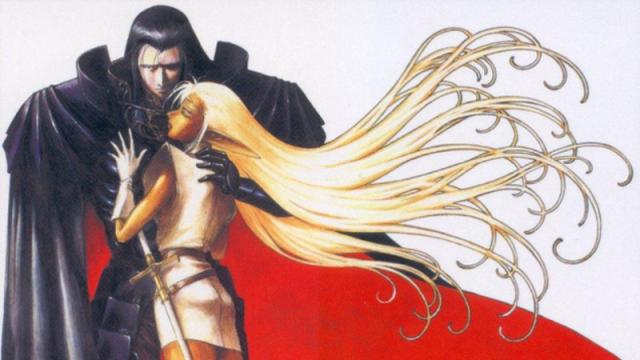
Comments
9 responses to “The Dungeons And Dragons Session That Became A Real-Life Phenomenon”
Last night I got to see a newly promoted to paladin of vengeance fighter dwarf get vengeance for a slaughtered small village…
…
…by smashing in the face of a surviving 10 year old with his shield.
Loved it on the Dreamcast but I had no idea about it’s origins. I’ve always avoided the anime because I heard it was terrible, but I don’t really remember where I heard that so I think I might track it down tonight. I’m not normally a fantasy guy but Japanese fantasy tends to have enough visual charm to win me over.
The original Record of Lodoss War OVA anime (13 episodes) is good for what it is – a mid-to-high budget OVA series in the late 80s/early 90s style. It’s quite pretty. Also some might find it boring.
The subsequent TV anime, Legend of the Heroic Knight, isn’t very good IMO but it’s a bit more of a conventional television anime series. Nowhere near as well-made though.
Unfortunately both are tricky to find legit in English. There was going to be a Bluray release at some point but plans fell through. 🙁
I like that era of art style. I mean I love a lot of the quality increases that come with modern anime, this stuff looks fantastic on a big screen, but modern characters tend to be youth obsessed where in the 80’s and early 90’s even the teenagers tended to lean towards being more mature looking.
A lot of it is simply what’s easy to color cheaply with a computer. Also what sells. Popular designs have evolved enormously since then – the original Lodoss was 1990 so you’re talking 25 years gap there.
It was pretty high budget for anime at the time. You’re not going to get Macross: Do You Remember Love level animation but it’s often quite elaborate. And as mentioned in the article here, it had a kind of iconic look and realized the classic fantasy aesthetic better than just about anything put to film until the Lord of the Rings trilogy happened.
Content-wise it’s a mixed bag. I haven’t re-watched in ages, probably at least a decade, and it may not have held up well during the transition to higher-resolution stuff, but I know plot-wise it was a bit slow but fairly reasonable. On the other hand, ten years ago I was a complete idiot barely out of my teens and I don’t know if I’d trust my judgement from back then at all.
Had no idea it was so popular, maybe I’ll give it a look
The Lodoss anime OVA is great. A classic with really memorable music and everything. Even when watching via terrible quality rips of VHS fansubs in the late 90s. It’s also got an amazing ability to send people to sleep. I don’t know what it is about it, but within 10-15 minutes you’re starting to feel tired and if you were to put it on infront of a room of people in an evening session you could almost guarantee someone would be asleep by the end.
Remember really liking the Dreamcast game too, though I suspect it holds up extremely poorly nowadays.
Oh also, don’t forget that Legend of Crystania and Rune Soldier Louie are both part of the same setting as Lodoss. Rune Soldier’s okay. Crystania not so much.
I remember watching this anime back in the late 90s, it was really something back then.
Deed-oh!
Ahh Lodoss. My second favorite anime series ever, only behind Evangelion. I weep that even with a wealth of novels to draw from we’re unlikely to get another series.